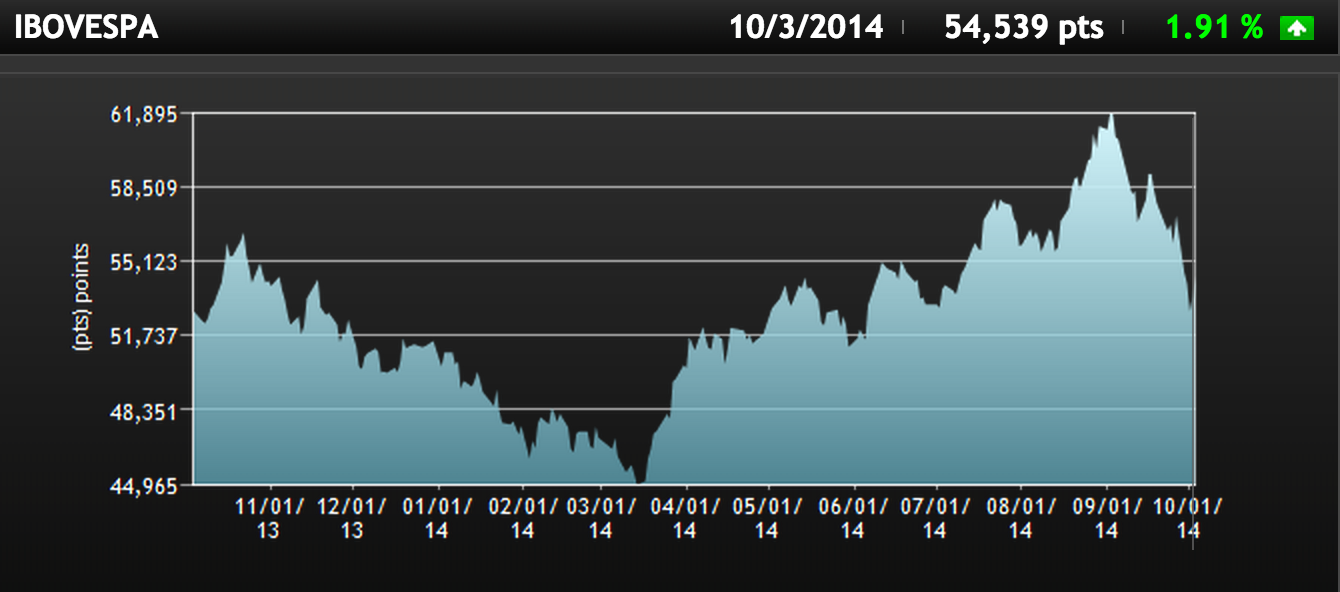Brazilian stock exchange, BOVESPA, has reported its latest monthly volumes figures on Friday, revealing that the local market place has not been spared by rising Volatility . In fact, the Brazilian stock market might be among those which are likely to be even more volatile in the coming weeks due to upcoming presidential elections, the first round of which will be held tomorrow.
Volumes picked up across the board, with the total trading value in the equity market rising by 18% to $75 billion (BRL 184.32 billion) in September. This happened as current President Dilma Rousseff’s second term candidature gained popularity in recent polls, which worried minority investors in state-run companies, such as energy giant Petrobras.

BOVESPA Index 1 Year Chart, Source: BOVESPA
The current president’s government has been lax in implementing structural reforms, instead engaging in fiscal stimulus. The country’s stock market benchmark BOVESPA index rallied more than 35% since the lows it marked in March this year, only to lose 15% in September as the fears of rising interest rates in the US sparked worries across emerging markets.
The country’s stock market remains way below all-time highs marked in the run up to the “great financial crisis” in 2008.
The Brazilian Real and the Fed’s Low Interest Rates
The Brazilian real has hit its lowest level since December 2008 in the run up to the election. The country’s Central Bank Governor, Alexandre Tombini, has been a voiceful critic of the Fed’s easy monetary policy stating in 2010, “Quantitative easing only generates an over supply of dollars and impacts directly on Brazil’s macroeconomic policies.”
The central bank governor argued that excessive capital inflows caused by the U.S. Federal Reserve’s easy monetary policy have materialized as challenges for the Central Bank of Brazil. September has also been very active on the foreign Exchange market with the number of U.S. dollar futures traded on the exchange rising by almost 24%.

USDBRL Weekly Chart, Source: NetDania
The currency has been very volatile in recent years mainly due to rapidly shifting political and monetary policy environment. Just as the Fed has been accused by the local policymakers for being the reason for a strong Brazilian real a couple of years back, this time they might change their tune and blame the Fed’s monetary policy stance for the weak Brazilian real.
The number of spot U.S. dollar transactions has risen by 13% when compared to August, however, the total value remained largely unchanged on a month-on-month basis reported at $29.64 billion.
Foreign investors have been the most active group in derivatives trading taking almost 39% of total volumes, compared to 35.44% in August. Financial institutions took second spot, accounting for 28.6%, followed closely by institutional investors which picked up 25.4%. Individual investors picked up about 6.2% of transactions on the derivatives segment of BOVESPA.

















